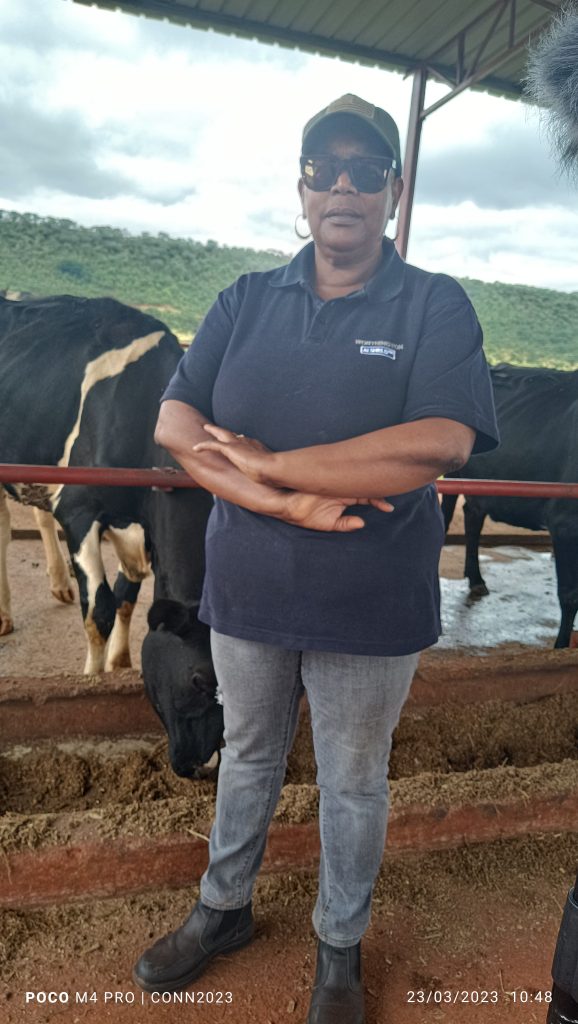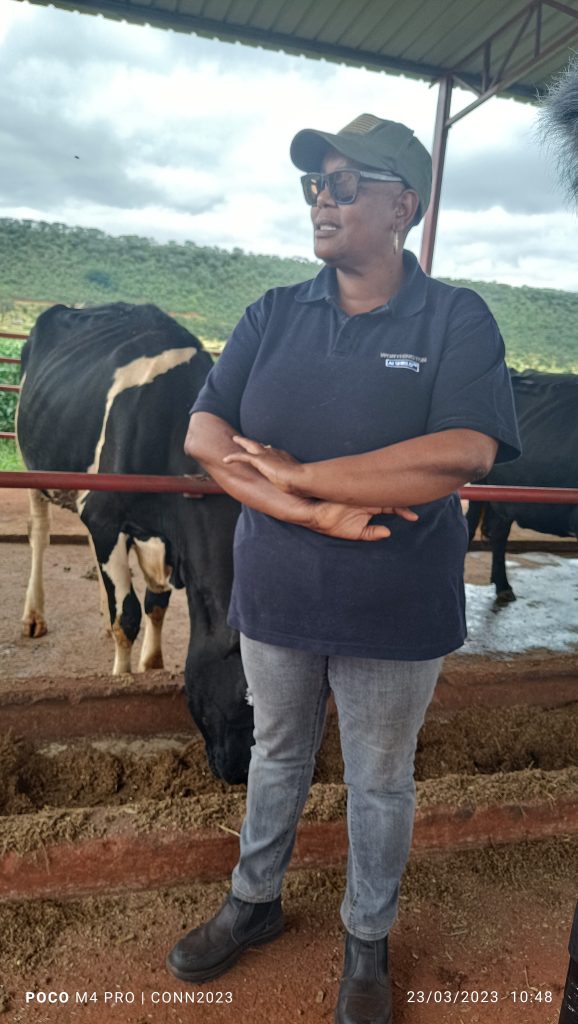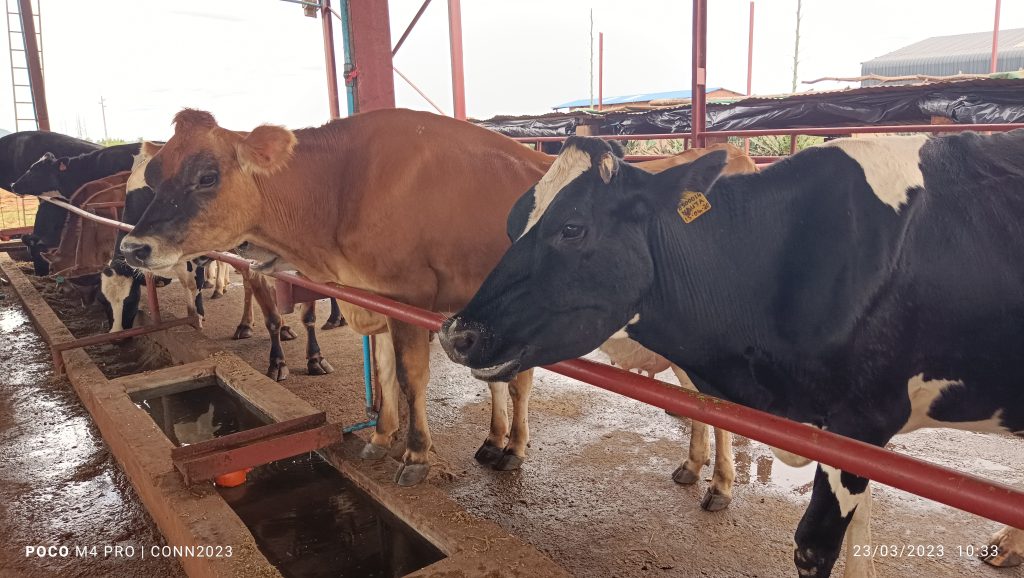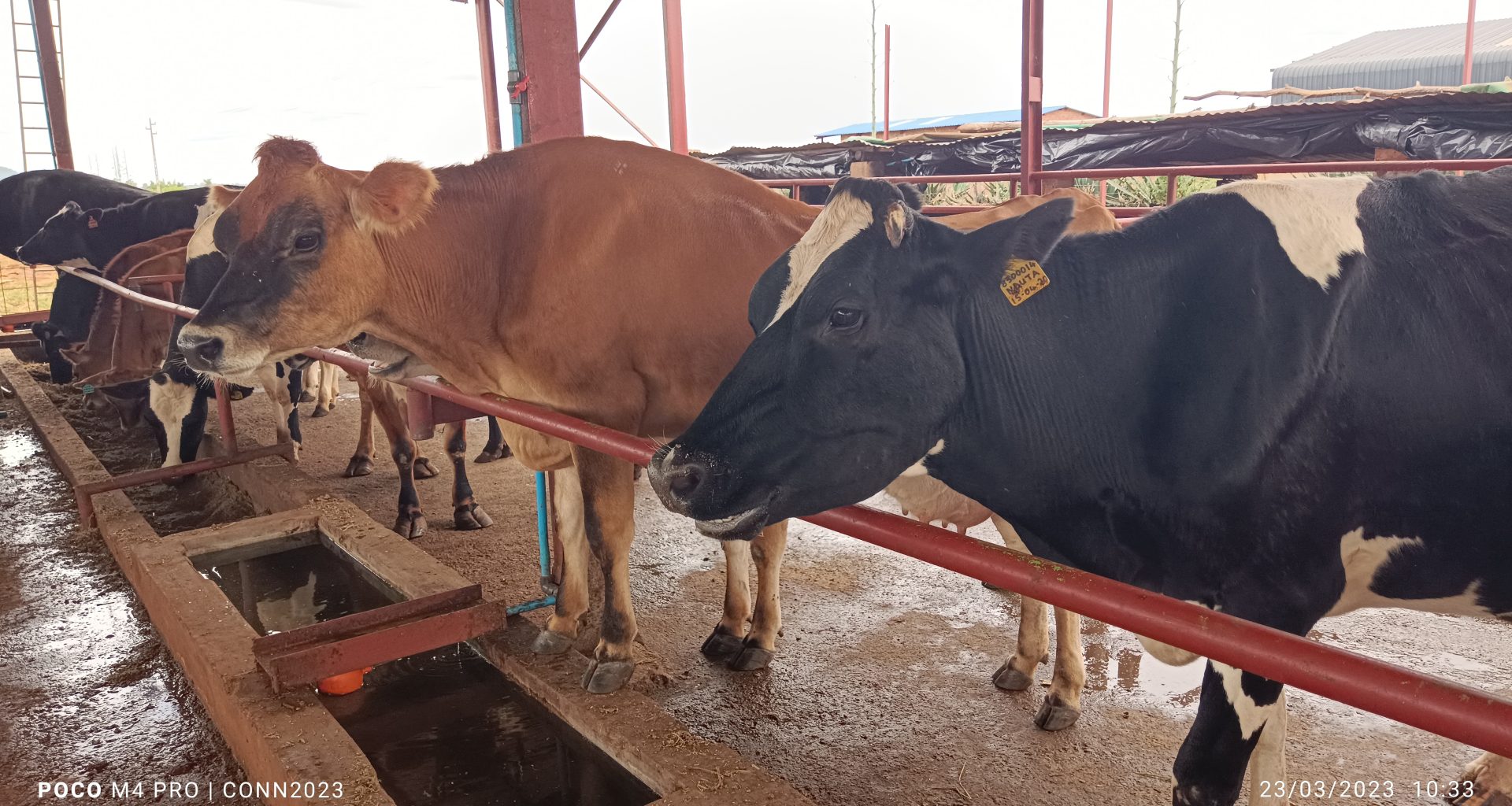By Conrad Mwanawashe

“Whatever it is that you want to do as a woman, the opportunities in agriculture are limitless and you have what it takes. Dairy farming is encouraging for women because there are a lot of initiatives supporting women and youth,” said Eunah Makoni.


Makoni is running Kintyre Smart Dairy under Zvimba district.“My advice to other women is that we have always been in agriculture, actually we are the mainstay of agriculture so it’s just a matter of focussing on dairy itself because what a woman sets her eyes on, she will do it 101%,” she said.Kintyre Smart Dairy started mid-2020 and milking started in April 2021. “Since then we have just been milking and milking. We are doing about 440-480 litres per day, an average of 20litres per animal and we are currently milking 22 animals,” said Makoni.
Her day starts at 3am with the morning milking session. Once the milking is done, Makoni and her team clean the milking parlour, the walkways from the barn to the parlour and the barns. After thorough cleaning the team puts clean feed.
During that time the animals will be resting at the paddocks. The animals are returned to the barn at about mid-morning and spend the day in the barn.“At 1500hrs we do our afternoon milking and the same cleaning procedures are carried out. During the day we are scratching the barn.
“Processors penalise farmers for dirty milk.
But what led Makoni into dairy farming? “I am an animal scientist by profession and for the better part of my professional years I have been working in dairy development work in East Africa where we were helping small-scale dairy farmers develop from zero.
“Towards my retirement I just decided that I really wanted to do that for myself too because it is something I have been passionate about and have been helping other people develop. So I thought it was time to start dairy for myself,” she said.
Kintyre Smart Dairy has a state-of-the-art milking parlour, feed mixer, a thriving soya bean crop and machinery for making silage, milking 22 cows along with many other cows. The enterprise is in the processing of developing structures to produce its own feed – which accounts about 50%-70% of production costs.
With such achievements so far one, would be tempted to sit back and enjoy the show. But not for Makoni who is still dreaming, with the dream being on the type and number of cows and growing the enterprise adopting elements of backward integration.
“We are milking 22 cows of which the majority are Holstein not by design but by default because the breed that I would desire to have more is the Jersey and actually we are working towards having a 100% Jersey breed. I like the Jersey personally; it’s a beautiful cow, and it’s a small cow. Being a small cow I like its feed efficiency.Holsteins are the biggest cows of the dairy breeds and have the black and white coat pattern while the Jerseys are the smallest.
“Of the 22 cows that I am milking 10 are Jersey and 12 are the black and white, the Holstein but for what we are doing and where we are doing it, I think the minimum number of milking cows that we require for the business to make sense is a 50. By this I mean that besides the milking cows we will have other cows which are maybe dry, ready to come into milk, we will also have followers – maybe pregnant cows or in-calf heifers and then we will have calves.” said the dairy farmer.
“My desire is not to buy feed, but to grow everything that I use for my own feed. I currently have soya bean, which is one of the most expensive raw materials in formulating concentrates and I also make silage from my own maize. When the season is good like last year, we went around and harvested some hay from just around us where city council is not cutting grass. We also use spent grain (masese) from the breweries which is good for energy and molasses that we buy from Chiredzi,” she said.
Makoni, like many other dairy farmers, has had a shoulder throughout her journey, the Zimbabwe Association of Dairy Farmers (ZADF).
“My journey with ZADF started in 2021 with the belief that there is strength in numbers. My affiliation to ZADF resulted in me participating in the on-going TranZ DVC project where I was supported with four Jersey in-calf heifers after submitting my application,” she said.
ZADF has been “very supportive of our enterprise”, according to Makoni. “They advise us on dairy animal nutrition, cropping, silage preservation and breeding . Of late they have also facilitated for our herd to be vaccinated against foot and mouth.”
Apart from dairy, Makoni’s other line of business is supplying bull semen. This line of business has exposed her to some of the challenges that smallscale dairy farmers face.
“We deal in bull semen and I see a lot of farmers coming to buy but they have a serious problem with artificial inseminators, sometimes they end up using people who are not very capable and sometimes yes they use they Government veterinary officers or ZADF staff but I think the numbers of those qualified as AI service providers is very small. If ZADF invests in training more AI service providers, that would be good for the dairy industry,” she said.Makoni supplies ultra-plus sexed bull semen imported from UK and US which performing very well.
“Since the national dairy herd has dwindled there are a lot of initiatives to up the number of our dairy animals. All stakeholders are working towards that and there has been encouragement for farmers to use sexed semen versus conventional semen because if they are using conventional semen chances of getting female cows are 50% but when they use sexed semen those chances will go to 96% plus. After the semen is harvested, it’s actually gender sorted whereby they separate the male and females and dairy farmers want females because their business is about cows and milk so they would be using sexed semen that is skewed towards females,” said Makoni.She had to deal with a myriad of challenges for her to get this far.
“I wanted to start bigger than I started but I couldn’t get the starter stock – the in-calf heifers. Most of the people that are selling the in-calf heifers are actually selling the cows want to get rid of and the prices they are charging for those animals, I don’t think it’s commensurate with the quality of those animals. There are not many people in the business of producing heifers.”
“Also, we have no control over the prices of the inputs that are very high. Right now, we are at a time between seasons and we are buying inputs at high prices.”“Therefore I would like to lobby policymakers and all the stakeholders for prices that are favourable for the dairy farmer,” she said.Celebrating women
Makoni has some words of advice to women.“To those who want to start dairy, it’s important to consult with those who have gone into dairy before them because there are lessons to learn from them. There is no need for them to make the same mistakes that I made but learn how to make own feed – which accounts about 50%-70% of production costs. If you cut that cost substantially it will help your bottom line.”











